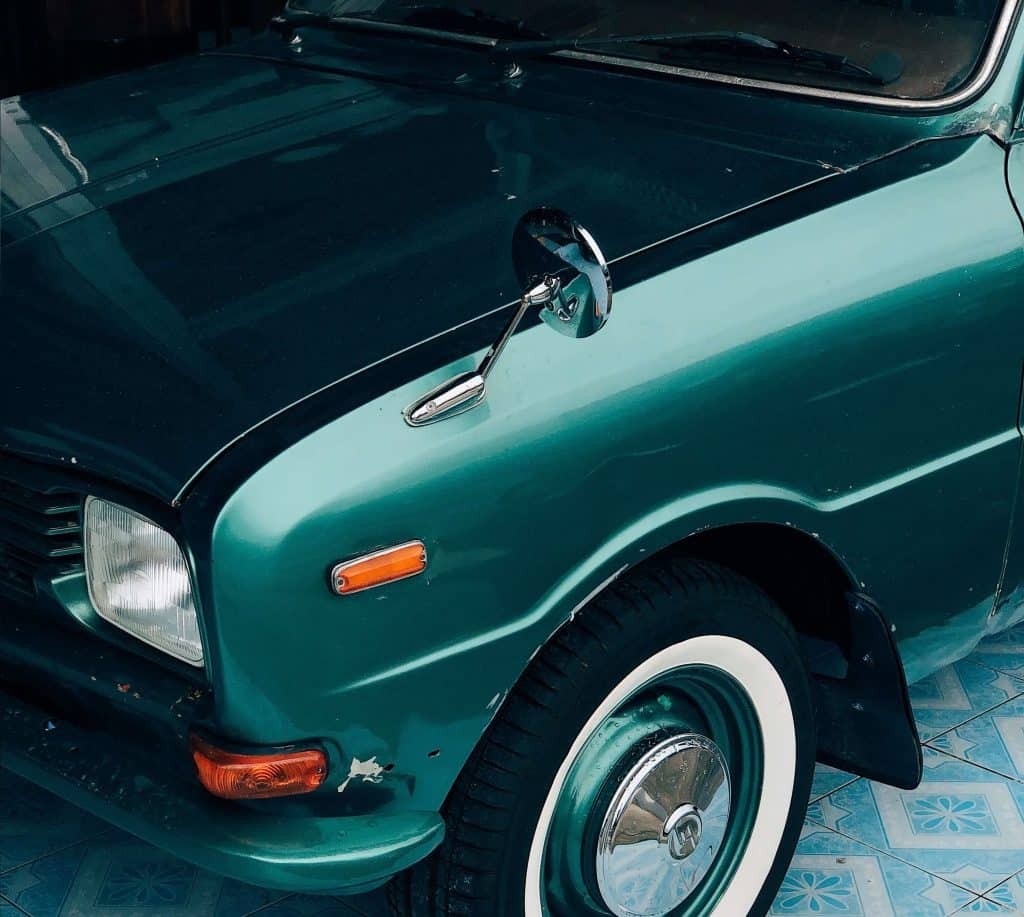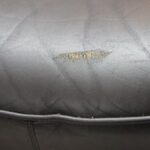Car enthusiasts understand the frustration of noticing imperfections on their vehicle’s otherwise pristine paintwork. Among the common issues, rough sponge marks, often referred to as swirl marks, can significantly detract from your car’s appearance. These fine scratches are typically the result of improper washing techniques, particularly using abrasive sponges or cloths that create micro-scratches in the clear coat.
Fortunately, repairing these sponge marks is a manageable task for car owners, and this guide from Car Repair Online will walk you through the process, ensuring you can restore your car’s shine and protect its paint for the future.
Understanding Sponge Marks and Swirl Marks
Sponge marks, or swirl marks, are essentially very fine scratches in the clear coat of your car’s paint. The clear coat is the top layer, designed to protect the color coat underneath and provide gloss and shine. These marks are usually circular or web-like patterns that become especially visible in direct sunlight.
They are primarily caused by:
- Improper Washing Techniques: Using abrasive sponges, brushes, or dirty wash mitts can drag dirt and grit across the paint surface, causing scratches.
- Automatic Car Washes: Many automatic car washes use brushes that, while convenient, can be too harsh and create swirl marks over time.
- Drying with the Wrong Materials: Using regular towels or letting the car air dry can also lead to water spots and further swirl marks.
 Car Swirl Marks under Sunlight
Car Swirl Marks under Sunlight
Alt text: Close-up of car paint showing swirl marks and scratches under direct sunlight, illustrating clear coat damage from improper washing.
Identifying Sponge Marks on Your Car
Identifying sponge marks is usually straightforward. They are most visible in direct sunlight or under strong artificial light. Look for:
- Circular or Spiderweb Patterns: These are the tell-tale signs of swirl marks, often radiating from a central point.
- Fine Scratches: They are generally shallow and only affect the clear coat.
- Visibility at Certain Angles: Swirl marks may disappear or become less noticeable when viewed from different angles or in low light.
To confirm if you are dealing with clear coat sponge marks, you can perform a simple test:
- Clean the Area: Wash and dry the affected area thoroughly.
- Inspect Closely: In good lighting, examine the area for the telltale swirl patterns.
- Fingernail Test (Caution): Gently run your fingernail over the marks. If your nail does not catch, it’s likely a clear coat scratch like sponge marks. If it catches, it might be a deeper scratch requiring more intensive repair.
Step-by-Step Guide to Repairing Sponge Marks
Repairing sponge marks is essentially a process of polishing the clear coat to level out the fine scratches. Here’s a detailed guide:
Tools and Materials You’ll Need:
- Car Wash Soap: A quality car wash soap designed to be gentle on paint.
- Two Buckets: One for wash water and one for rinse water.
- Microfiber Wash Mitts: Soft and designed to lift dirt away from the paint.
- Microfiber Drying Towels: For a scratch-free drying process.
- Paint Correction Compound or Swirl Mark Remover: Specifically formulated for removing fine scratches and swirl marks.
- Polishing Pads: Foam pads designed for applying polish (various grades may be needed).
- Dual-Action (DA) Polisher (Recommended) or Hand Applicator Pads: A DA polisher will make the job significantly easier and more effective, but hand application is possible for light marks.
- Microfiber Cloths: For wiping off polish residue.
- Car Wax or Sealant: To protect the polished paint and enhance shine.
Step 1: Thoroughly Wash and Dry Your Car
Before attempting any scratch repair, it’s crucial to have a clean surface.
- Rinse the Car: Rinse the entire car with water to remove loose dirt and debris.
- Two-Bucket Wash: Fill one bucket with car wash soap and water, and the other with clean rinse water. Dip your wash mitt into the soapy water, wash a section of the car, and then rinse the mitt in the rinse bucket before reloading with soapy water. This prevents dirt from being reintroduced to the paint.
- Dry the Car: Use microfiber drying towels to dry the car gently. Pat dry rather than wiping to minimize any potential for scratching.
Step 2: Apply Paint Correction Compound
- Apply Compound to Pad: If using a DA polisher, apply a few pea-sized drops of paint correction compound to a polishing pad. If applying by hand, apply a small amount to a hand applicator pad.
- Polish the Affected Area:
- DA Polisher: Work in small sections (e.g., 2×2 feet). Turn on the polisher at a low speed and spread the compound evenly over the section. Increase speed to medium and use overlapping passes, applying moderate pressure. Follow the compound manufacturer’s instructions regarding speed and pressure.
- Hand Application: Apply the compound to the affected area using firm, circular motions. Work in small sections and apply even pressure.
- Wipe Off Residue: After polishing each section, use a clean microfiber cloth to wipe off the compound residue and inspect your work. Repeat the polishing process if necessary, especially for more stubborn sponge marks.
Step 3: Apply Car Polish (Optional but Recommended)
While a paint correction compound can often remove sponge marks and restore shine, using a dedicated car polish afterwards can further refine the finish and enhance gloss.
- Apply Polish to Clean Pad: Apply a small amount of car polish to a clean polishing pad.
- Polish the Area: Repeat the polishing process as described in Step 2, using lighter pressure.
- Wipe Off Residue: Wipe off the polish residue with a clean microfiber cloth.
Step 4: Protect Your Paint with Wax or Sealant
After polishing, the clear coat is vulnerable and needs protection. Applying a layer of car wax or sealant will:
- Protect against future scratches and environmental damage.
- Enhance gloss and shine.
- Make future washing easier.
Apply your chosen wax or sealant according to the product instructions. Typically, this involves applying a thin, even layer, letting it haze, and then buffing it off with a clean microfiber cloth.
Preventing Sponge Marks in the Future
Prevention is always better than cure. To avoid creating sponge marks and swirl marks:
- Use the Two-Bucket Wash Method: This is crucial for preventing dirt and grit from scratching your paint.
- Use Quality Wash Mitts and Drying Towels: Opt for soft microfiber wash mitts and drying towels. Replace wash mitts regularly as they can accumulate embedded dirt over time.
- Avoid Automatic Car Washes with Brushes: Choose touchless car washes or hand wash your car.
- Wash Your Car Regularly: Regular washing prevents the buildup of dirt and grime that can cause scratches during washing.
- Dry Your Car Immediately After Washing: Don’t let water air dry, as this can cause water spots and may require more aggressive wiping, potentially leading to swirl marks.
- Consider Paint Protection: Applying a ceramic coating or paint protection film can provide a more durable layer of protection against scratches, including sponge marks.
Final Thoughts
Repairing rough sponge marks on your car is a rewarding DIY task that can significantly improve your vehicle’s appearance. By following these steps and adopting proper car washing techniques, you can keep your car looking its best and maintain its value. Remember, patience and attention to detail are key to achieving professional-looking results. For persistent or deep scratches, consulting a professional detailing service is always an option, but for most sponge marks, this guide provides you with the knowledge to tackle them effectively at home.

